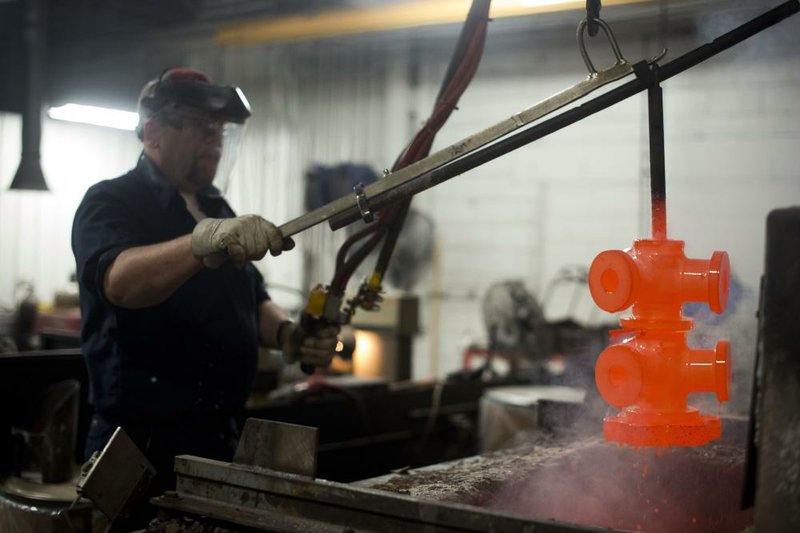WASHINGTON - U.S. orders for long-lasting manufactured goods rebounded in April, buoyed by more demand for aircraft and stronger business investment, the Commerce Department said Friday.
Orders for durable goods, items expected to last at least three years, rose 3.3 percent last month compared with March. Orders fell 5.9 percent in March compared with February.
“This report is consistent with the economy continuing to recover, but just at a moderate pace,” said Scott Brown, chief economist at Raymond James & Associates Inc. in St. Petersburg, Fla. “We’re not getting much demand from the rest of the world, but we are getting growth domestically.”
A measure of business investment plans increased 1.2 percent. And the government revised the March figure to show a 0.9 percent gain, instead of a slight decrease.
Companies ordered more machinery and electronic products last month, typically signs of confidence. More spending by businesses could ease fears that manufacturing could drag on the economy later this year, economists say.
Factories had been seeing fewer orders at the start of the year, in part because slower global growth had reduced demand for U.S. exports. Economists had also worried that across-the-board federal spending cuts and higher taxes might prompt businesses to cut back on orders.
Paul Ashworth, an economist with Capital Economics,said the April report suggests economic growth is holding up. He predicts growth in the April-June quarter will be at a rate of 2 percent to 2.5 percent. That compares with the 2.5 percent rate reported for the January-March quarter.
Still, the payoff from the pickup in business investment may not come until the end of the quarter.
That’s because the government looks at shipments when it measures the gross domestic product, not orders. And shipments of goods that signal investment plans fell in April, reflecting weaker demand at the start of the year.
“Business investment appears to have started the second quarter on a weak note but should rebound over the final two months of the quarter,” Ashworth said.
The April increase pushed total orders to $222.6 billion on a seasonally adjusted basis. That is 6.5 percent above the level of a year ago.
Orders for transportation goods gained 8.1 percent, reflecting a 16.1 percent jump in demand for commercial aircraft and a 53.3 percent increase in orders for military aircraft. Orders for motor vehicles increased 1.9 percent.
Excluding the volatile transportation category, orders rose 1.3 percent in April. That followed a 1.7 percent decline in March.
“The report was strong overall with every sector posting gains after uniform declines in March,” said economist Bricklin Dwyer of BNP Paribas.
Still, other reports showed that factories continued to struggle in April.
The Institute for Supply Management reported factory activity barely expanded in April, held back by weaker hiring and less company stockpiling.
And manufacturing output dropped 0.4 percent last month, the Federal Reserve reported earlier this month. Auto companies cranked out fewer cars, factories made fewer consumer goods and most other industries reduced output.
One bright spot for the economy has been the American consumer, who has shown surprising resilience this year despite paying higher Social Security taxes.
Consumer spending rose from January through March at the fastest pace in more than two years. Auto sales have been rising over the past year. And Americans increased their spending at retailers in April, from cars and clothes to electronics and appliances.
A better job market and a sustained recovery in housing have helped soften some of the effects of the end of a temporary 2 percent payroll-tax deduction Jan. 1. Since November, employers have added an average 208,000 jobs a month. That’s up from just 138,000 jobs a month during the previous six months.
The overall economy grew at an annual rate of 2.5 percent in the January-March quarter, buoyed by the fastest rise in consumer spending in more than two years. Many economists believe growth is slowing to around 2 percent in the current April-June quarter and could stay near or slightly above that level for the rest of the year.
Information for this article was contributed by Martin Crutsinger of The Associated Press, Alex Kowalski of Bloomberg News and Jeffry Bartash of MarketWatch.
Business, Pages 29 on 05/25/2013

